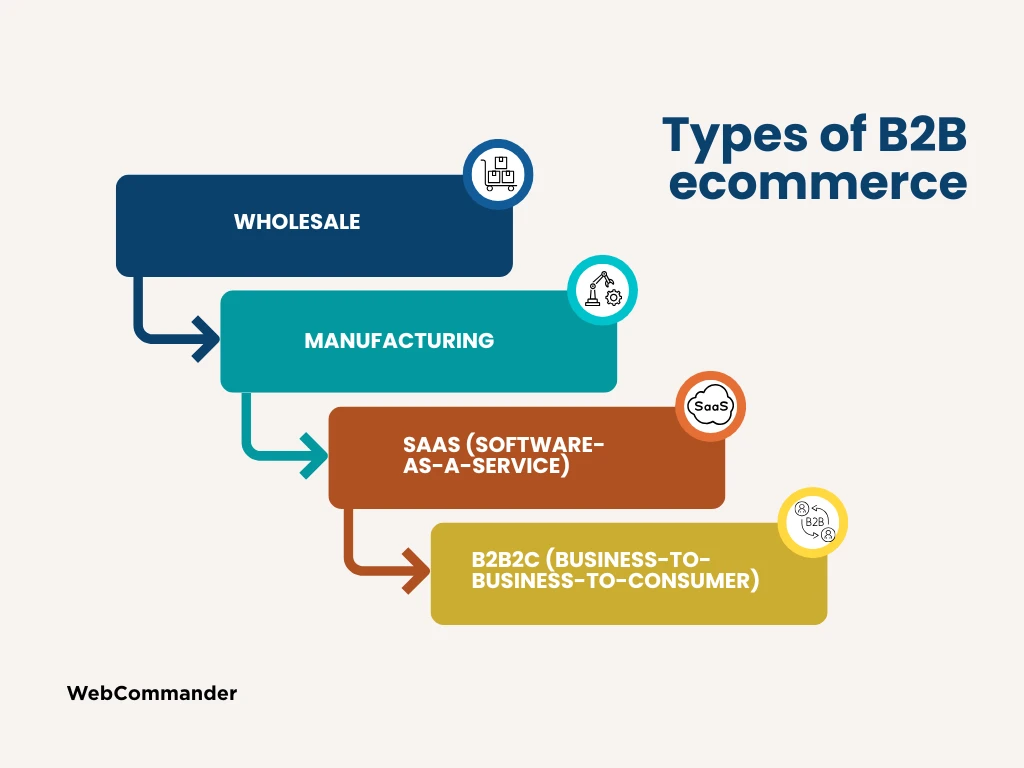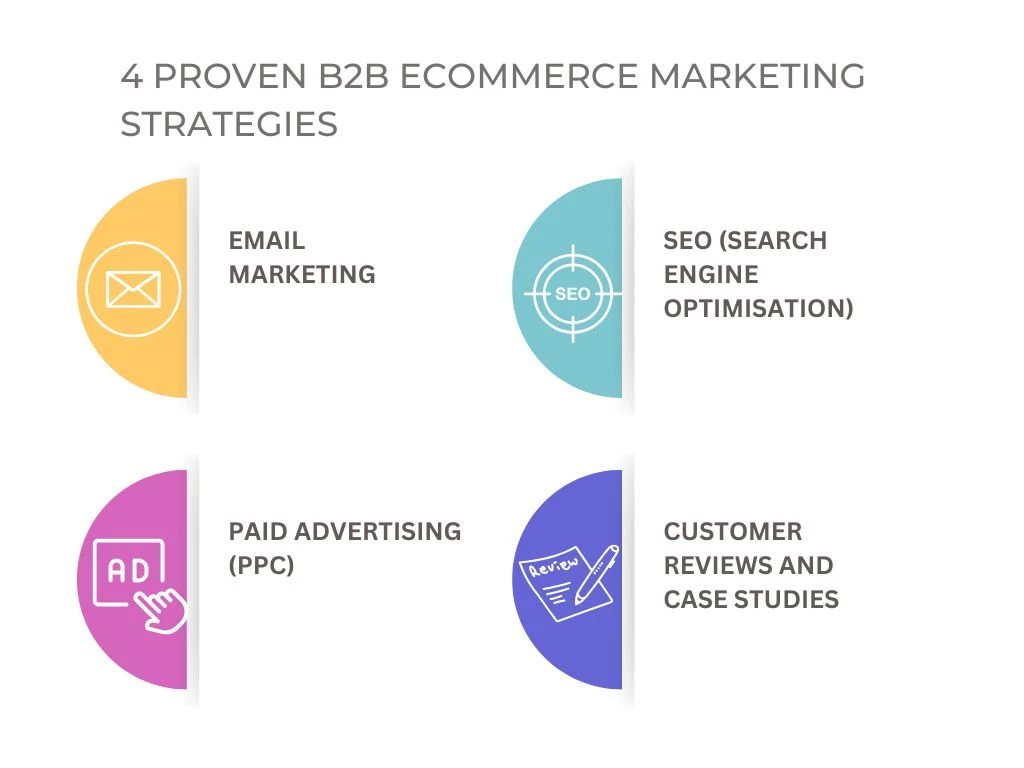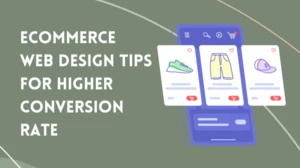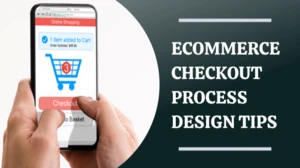Everything You Need To Know for a B2B Ecommerce Website
B2B ecommerce is no longer just a trend- it has emerged as a powerful force driving business innovation and efficiency. For manufacturers, wholesalers, and distributors, it has become essential to stay competitive.
The global business-to-business ecommerce market size was at USD 18,665.95 billion in 2023 and is projected to grow at a compound annual growth rate (CAGR) of 18.2% from 2024 to 2030.
But what exactly is B2B ecommerce? What is the difference between B2B and B2C? What strategies, platforms, and trends should you follow to thrive in this space? In this guide, we will cover everything you should know to be successful in the world of B2B ecommerce.
What is B2B ecommerce?
B2B ecommerce (Business-to-Business electronic commerce) is all about buying and selling products or services between two businesses via an online platform.
Let's say a coffee shop has to order ingredients in bulk every week. The business owner logs into a B2B ecommerce website, picks the items, checks the prices based on their contract, places the order, and gets the delivery- all online. That's how B2B ecommerce works in action.
Types of B2B ecommerce
There are many different types of B2B ecommerce. Here are some common ones.

Wholesale
In this model, businesses sell products in bulk to other businesses at discounted rates. The buyers are mostly retailers, distributors, or other companies that resell the products.
Manufacturing
In this model, manufacturers produce raw materials or finished goods and send those directly to other businesses, mostly through online platforms.
SaaS (Software-as-a-Service)
Businesses use the subscription model and sell cloud-based software services to other businesses using this model.
B2B2C (Business-to-Business-to-Consumer)
This model of B2B and B2C transactions is where a business sells products or services to another business that sells them directly to customers.
What are the differences between B2B and B2C?
Here are some key differences between these two approaches.
Target audience: B2B businesses sell products or services to other companies, whereas B2C businesses sell products directly to individual customers.
Sales volume: In B2B, the transactions are few but usually higher in volume. In B2C, the sales are frequent with lower transaction values.
Customer interaction: B2B focuses on developing long-term relationships, but B2C includes less ongoing personal interaction.
Pricing structure: In B2B, prices are determined based on contract terms, volume, and long-term agreements, whereas in B2C, prices are mostly fixed and publicly displayed.
Customisation: Products are often tailored to meet particular business needs, but products in B2C are generally standardised for mass consumption.
5 advantages of B2B ecommerce
Let's take a look over some of the key benefits of the B2B ecommerce business model.
1. Higher order value and volume
Transactions in B2B usually happen in large quantities of goods or high-value services. Also, they are often recurring. Suppose a manufacturer who needs raw materials every day needs to restock the inventory daily or weekly.
This automatically creates a consistent sales cycle and long-term customer relationship. Ultimately, this ongoing partnership will lead to sustained business growth.
2. Minimal cost
Buyers can purchase without drawing resources like time. Sellers don't need to attend hundreds of trade shows, create orders manually, and send invoice reminders. However, with an b2b ecommerce solution, many of these things can be automated or handled by the customers themselves.
3. Personalised experience
Personalisation is another nice feature. In this business model, buyers get the flexibility to have specific requirements, buying habits, approval processes, and preferred products.
Based on the customer's history, order size, or other agreements, clients can get negotiated or tiered pricing alongside custom payment and shipping terms.
4. Wider market reach
One of the most powerful advantages of B2B ecommerce is that it allows sellers to break geographical barriers and reach a much larger audience than traditional business methods. Even they can make their products and services available 24/7, allowing buyers to place orders at their convenience.
5. Data-driven insights
When in the traditional way, the transaction usually happens through emails, phone calls, or in-person meetings; in the B2B ecommerce model, every interaction, order, and inquiry happens digitally. This gives the users the ability to generate and use data-driven insights to improve decision-making.
Also, insights into purchase frequency and average order value help businesses identify loyal clients to create targeted strategies.
4 proven B2B ecommerce marketing strategies

1. Email marketing
Most buyers prefer to connect via email instead of any other channel. As in B2B, the buying cycle is often longer, email marketing helps to guide potential buyers through every stage.
For example, you can send welcome emails for new leads, personalised product recommendations depending on past purchases, monthly newsletters with promotions, updates, or tips, or abandoned cart emails if you want to recover lost sales.
2. SEO (Search Engine Optimisation)
This strategy not only helps in expanding the reach but also boosts your online store's visibility. You can reach higher in Google's ranking and attract organic traffic by optimising your website's content and product description with strategic keywords. Do everything from keyword research to on-page SEO to technical SEO to backlink building.
3. Paid advertising (PPC)
This will allow you to appear in front of potential buyers by targeting ads on search engines, social media, and other platforms. Some of the common ad types include Google Ads, LinkedIn Ads, and Display Ads. This is a great strategy, especially for new businesses or time-sensitive promotions.
4. Customer reviews and case studies
Social proof is a must in B2B marketing as it shows other businesses trust and benefit from your products and services. You can try to build trust with new prospects, demonstrate measurable results, or showcase industry expertise.
Once you collect the reviews, display those on product pages or testimonials sections. Also, in-depth stories via case studies should be provided to show how the solution helped the clients solve a problem.
Final words
Eventually, what sets successful B2B marketers apart is their ability to combine strategies into a data-driven plan that puts the customers' needs first. So, put your focus on how you can solve problems, deliver value, and build genuine relationships so that your business can stand out in a crowded market.
Let's end the article with some trends that are shaping the B2B ecommerce landscape.
- One of the key drivers of B2B ecommerce adoption is automatic integration with enterprise systems such as Enterprise Resource Planning (ERP), automated order processing, supply chain visibility, and Customer Relationship Management (CRM). (Source)
- Around 45% of B2B organisations are experimenting with AI. (Source)
- Around 66% of B2B buyers consider order fulfillment and tracking as the most difficult part. (Source)




![How to Start an Ecommerce Business in Australia [2023 Guide]](/template/5731a701/images/resource-blog-right-img1.png)





